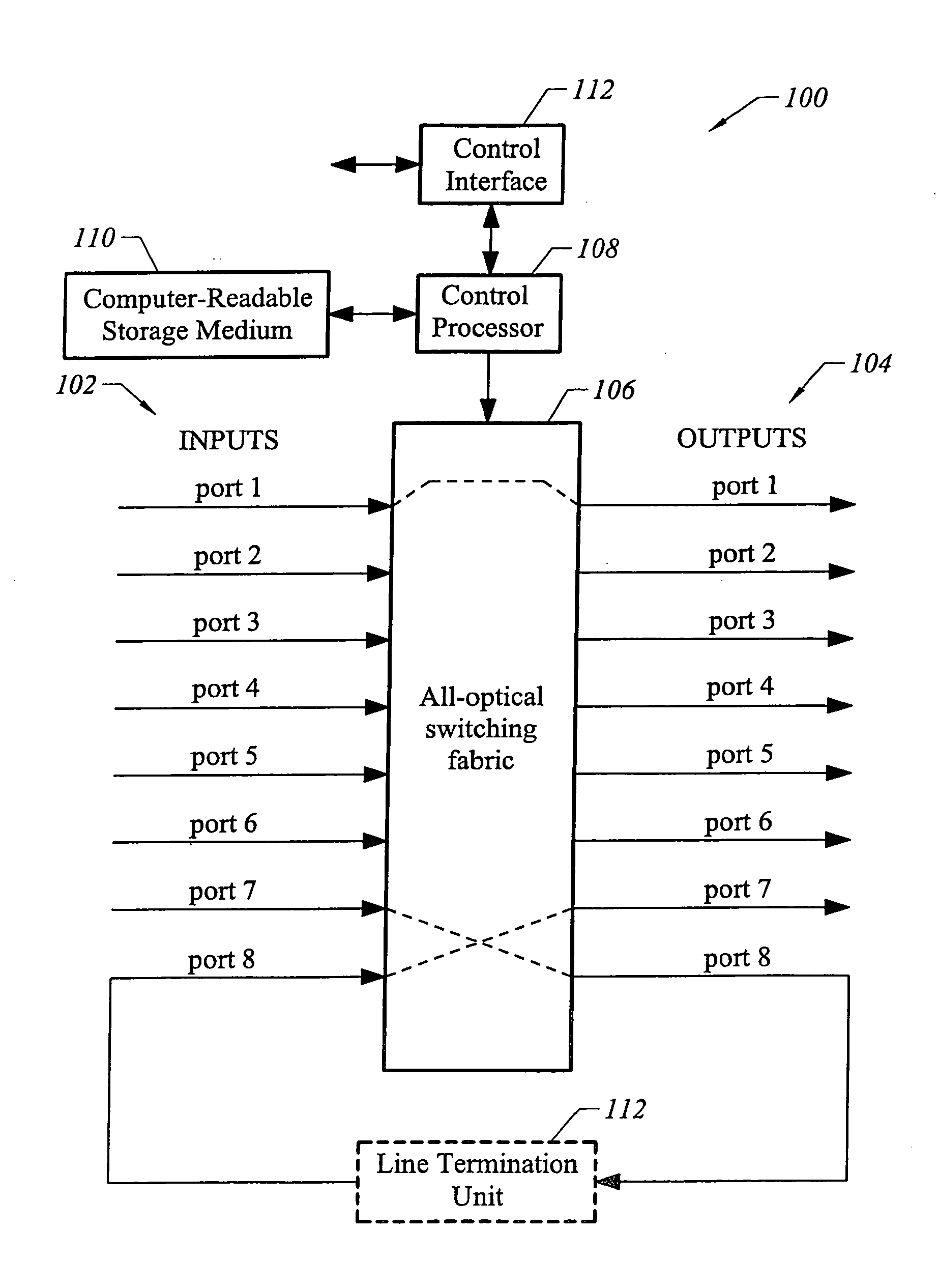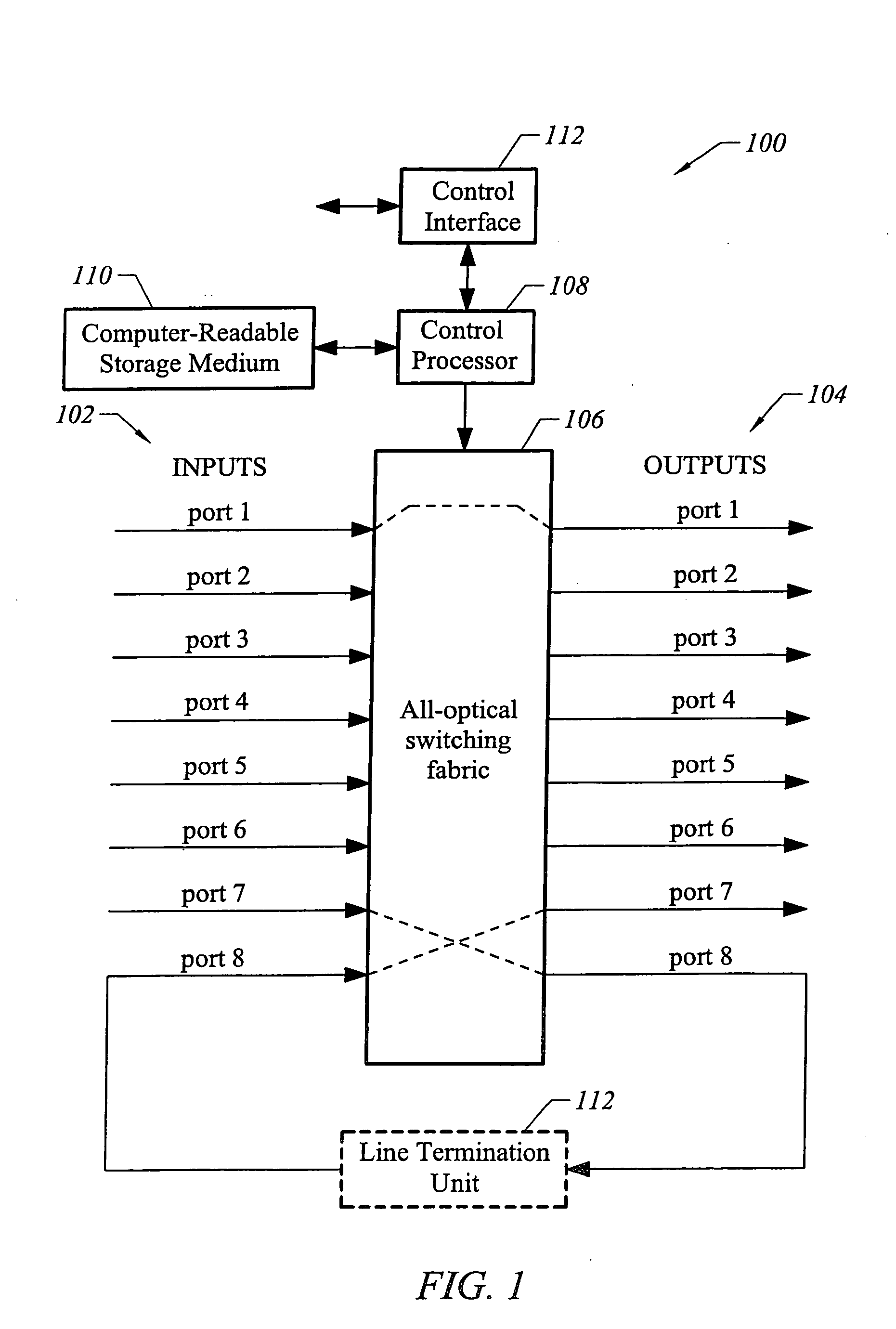Link discovery and verification procedure using loopback
a loopback and link technology, applied in the field of data communication networks, can solve the problems and achieve the effect of saving large implementation costs of optical networks
- Summary
- Abstract
- Description
- Claims
- Application Information
AI Technical Summary
Benefits of technology
Problems solved by technology
Method used
Image
Examples
Embodiment Construction
[0021] The present invention finds application in networks where it is desirable for nodes to discover and verify links among themselves. Wherever the terms “verify” or “verification” are used, it will be understood that the present invention also applies to the discovery of links. One particular application of the present invention is to optical cross-connects and nodes adjacent to optical cross-connects that require link verification.
[0022] Before describing details of link verification, the structures of representative participating nodes will be described. FIG. 1 depicts an all-optical cross-connect (OXC) suitable for implementing one embodiment of the present invention. An optical cross-connect 100 provides connectivity between a plurality of inputs 102 and a plurality of outputs 104. Any one of inputs 102 may be selectively coupled to any one of outputs 104 through an all-optical switching fabric 106. Switching fabric 106 has eight ports numbered 1 through 8, each consisting ...
PUM
 Login to View More
Login to View More Abstract
Description
Claims
Application Information
 Login to View More
Login to View More - R&D
- Intellectual Property
- Life Sciences
- Materials
- Tech Scout
- Unparalleled Data Quality
- Higher Quality Content
- 60% Fewer Hallucinations
Browse by: Latest US Patents, China's latest patents, Technical Efficacy Thesaurus, Application Domain, Technology Topic, Popular Technical Reports.
© 2025 PatSnap. All rights reserved.Legal|Privacy policy|Modern Slavery Act Transparency Statement|Sitemap|About US| Contact US: help@patsnap.com



